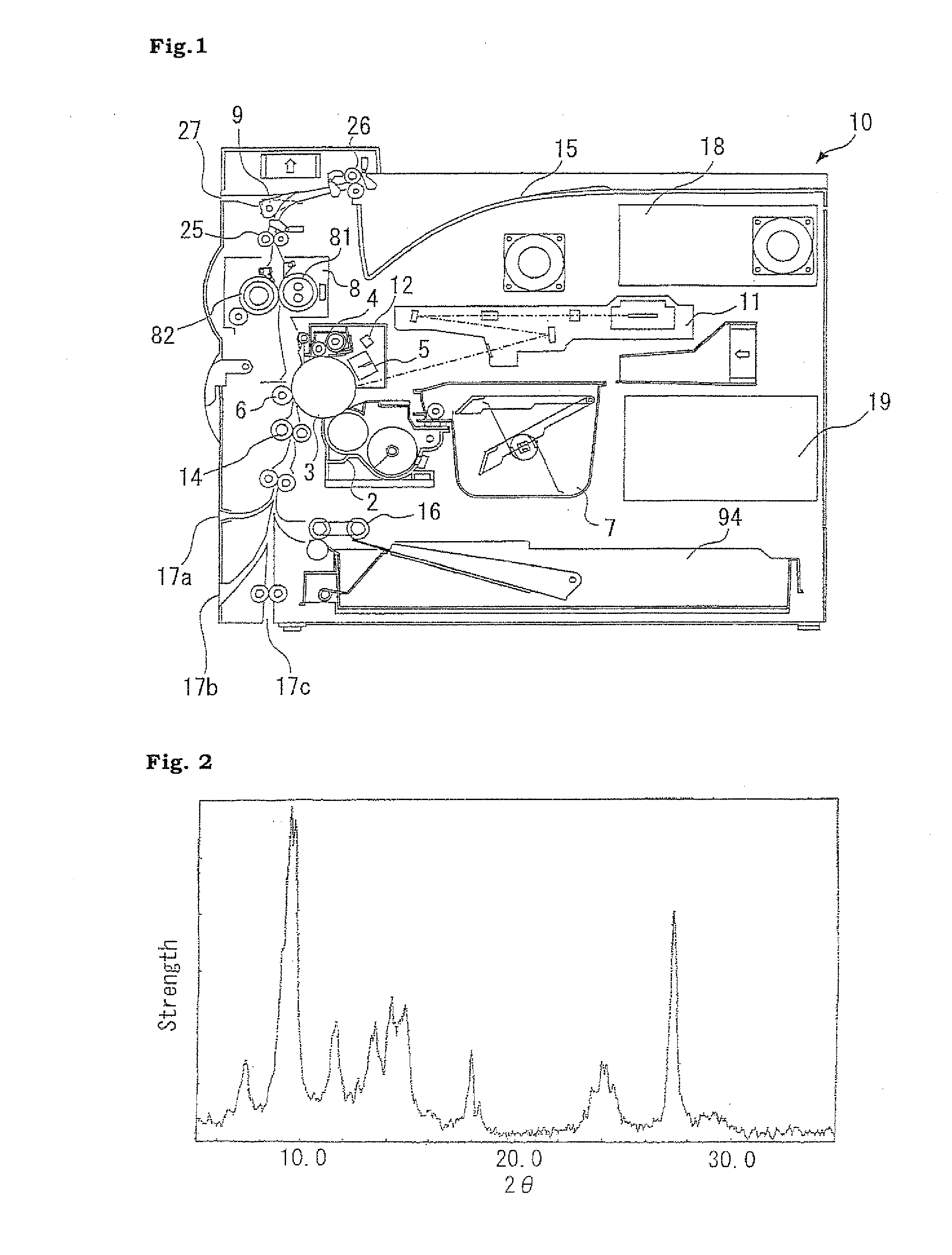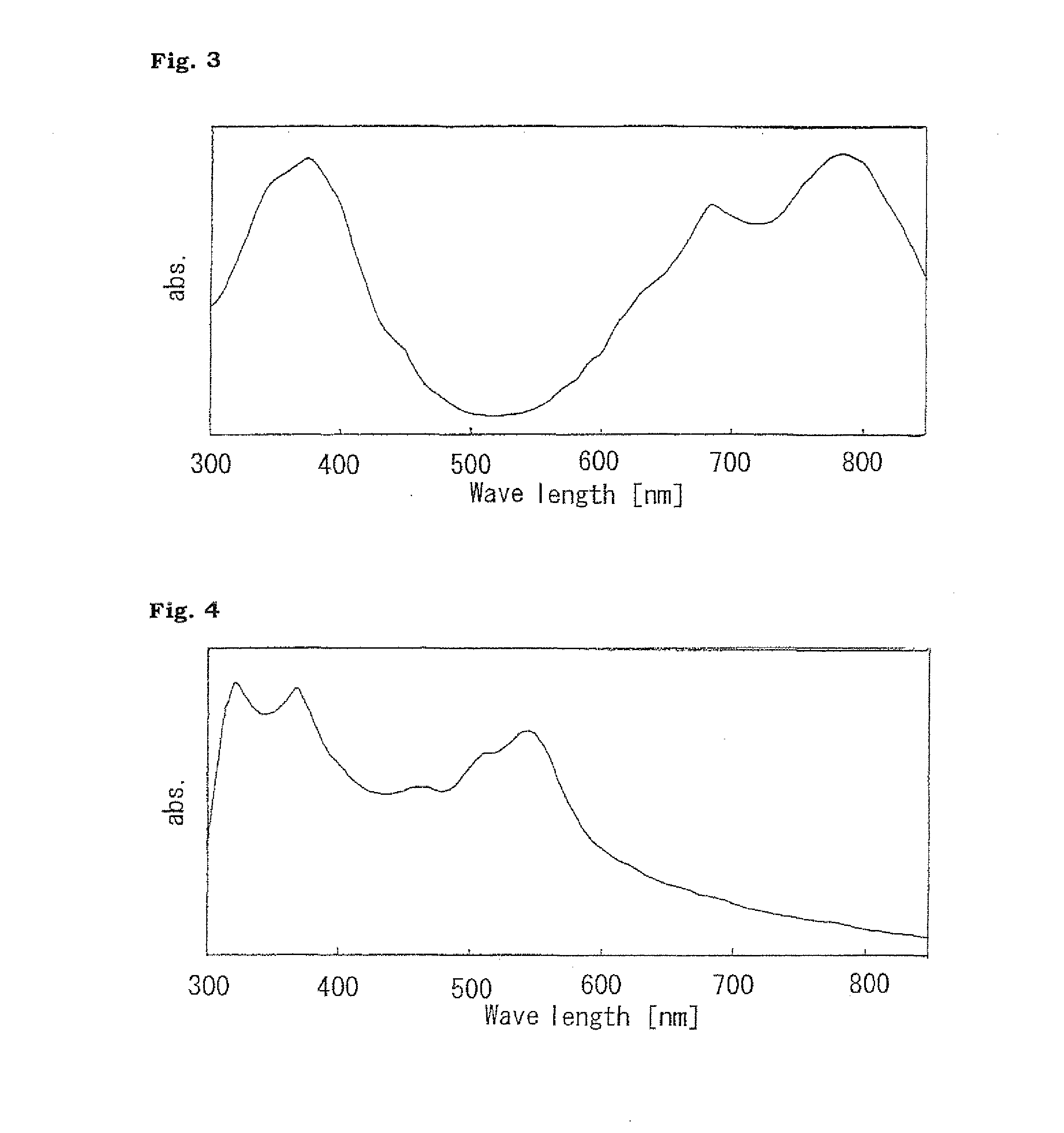Image forming apparatus
- Summary
- Abstract
- Description
- Claims
- Application Information
AI Technical Summary
Benefits of technology
Problems solved by technology
Method used
Image
Examples
production example 1
Production of Titanylphthalocyanine
[0132]A diiminoisoindoline in an amount of 29.2 g and sulfolane in an amount of 200 ml were mixed, and titanium tetraisopropoxide in an amount of 17.0 g was added thereto to be reacted under a nitrogen atmosphere at 140° C. for 2 hours. A precipitate was filtered off after cooling, and washing with chloroform, washing with a 2% aqueous hydrochloric acid solution, washing with water, washing with methanol, and drying were performed to obtain 25.5 g of a titanylphthalocyanine (yield 88.5%) represented by the following formula:
[0133]The titanylphthalocyanine obtained was confirmed to be a crystalline titanylphthalocyanine having major peaks in an X-ray diffraction spectrum for CuKα characteristic X-rays (wavelength: 1.5418Å) at Bragg angles (2θ±0.2°) of 7.3°, 9.4°, 9.6°, and 27.2°, in which a peak bundle formed by overlapping the peaks at 9.4° and 9.6° is the largest peak, and the peak at 27.2° is the second largest peak as illustrated in FIG. 2, and ...
production example 2
Production of Photoconductor A
[0134]The photoconductor A was produced according to the following method.
[0135]A titanium oxide (trade name: TIPAQUE® TTO-D-1, product by ISHIHARA SANGYO KAISHA, LTD.) in an amount of 3 parts by weight and a commercially available polyamide resin (trade name: AMILAN® CM8000, product by Toray Industries, Inc.) in an amount of 2 parts by weight were added to methyl alcohol in an amount of 25 parts by weight and dispersed with the use of a paint shaker for 8 hours to produce 3 kg of a coating solution for undercoat layer formation. The coating solution for undercoat layer formation obtained was subjected to cutting (processed into a ten-point surface roughness RzJIS according to JISB-0601 of 0.80 μm), and then applied to an aluminum conductive support with a washed surface having a diameter of 80 mm and a length of 348 mm by a dipping coating method to form an undercoat layer having a film thickness of 1 μm.
[0136]The titanylphthalocyanine obtained in Prod...
production example 3
Production of Photoconductor B
[0139]The photoconductor B was produced in the same manner as in the method for producing the photoconductor A in Production Example 2 except that a dibromoanthanthrone (model number: D01148, product by ZENECA limited) having absorbance as illustrated in FIG. 4 was used instead of the titanylphthalocyanine used as the charge generation material.
PUM
 Login to View More
Login to View More Abstract
Description
Claims
Application Information
 Login to View More
Login to View More - R&D
- Intellectual Property
- Life Sciences
- Materials
- Tech Scout
- Unparalleled Data Quality
- Higher Quality Content
- 60% Fewer Hallucinations
Browse by: Latest US Patents, China's latest patents, Technical Efficacy Thesaurus, Application Domain, Technology Topic, Popular Technical Reports.
© 2025 PatSnap. All rights reserved.Legal|Privacy policy|Modern Slavery Act Transparency Statement|Sitemap|About US| Contact US: help@patsnap.com



